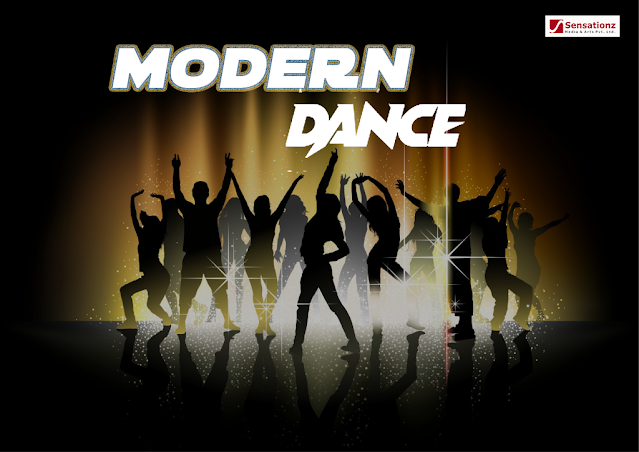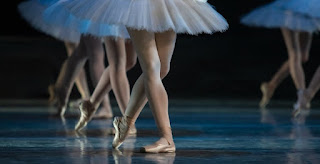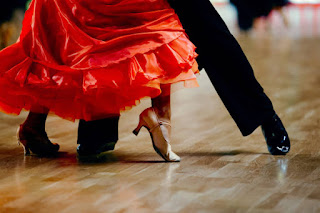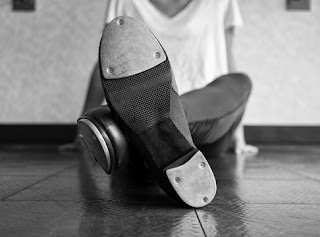Modern Dance
Modern Dance
Dance Has Been A Section Of Human Way Of Life Considering That The Very Earliest Communities And Civilisations, With Recorded Proof Of Dancing Being Observed Dating Back To 30,000 Years Ago.
Since Then, Exceptional Dances Have Changed, Merged And Evolved Into What We Be Aware Of These Days As The Most General Dance Genres.
Here Is A List Of The Most Popular Kinds Of Modern Dance :
- Ballet
- Contemporary
- Hip-Hop
- Tap Dance
- Ballroom Dance
- Street Dance
- Lyrical Dance
1. Ballet Dance
Ballet Dance Is A Preferred Art Form That Originated Over 500 Years Ago In Italy. Though Ballet Dancers Are Skilled To Exhibit Up Mild And Swish In Their Movements, Ballet Approach Requires An Exceptional Extent Of Strength, Balance, Technical Skill, And Flexibility. Dance Strikes Like Arabesques, Pliés, And Pirouettes Are Section Of The Easy Movement Vocabulary Of Ballet. Traditionally, Lady Ballet Dancers Operate En Pointe—Meaning On The Factors Of Their Tiptoes. Some Of The Most Famous Ballets Include Swan Lake, The Nutcracker, And Romeo And Julie, About Which We Will Discuss Later...
With Classical European Roots And A Vocabulary That’s Though Sincerely French, Ballet Has A Lengthy Tradition Of Creating Dancers Who Appear Weightless, Effortless And Trouble-Free As They Pull Off Tough Spins, Extensions, And Footwork.
But It’s A Long Way From Easy, So If You Fall In Love With Formal Ballet, You’ll Prefer To Determine Out Whether You Decide Upon To Make A Serious Commitment. Every Specialist Ballet Dancer Has Years Of Excessive Teaching In The Again Of Him Or Her.
Even If You Don’t Have Ideal Posture Or Long, Flexible Legs, Ballet’s Form And Symmetry Translates Without Problems Into Distinctive Faculties Of Dance. Ballet Fusion, For Example, Takes Musical And Choreographic Cues From Wildly Specific Genres, Infusing Ordinary Traces With Influences That Vary From Modern-Day Dance To Motown.
Types Of Ballet Moves:
There Are Four Unique Ballet Dance Patterns That Have Customary The Trajectory And Evolution Of The Art Form:
Romantic Ballet: Starting In The Nineteenth Century, Romantic Ballet Used To Be Once Carefully Influenced Via The Romantic Technology And Is The Place Some Of The Many Recognizable Factors Of Ballet Emerged, Like Pointe Work And Tutus. Romantic Ballet Emphasized Emotion, Lyricism, And Drama In Its Narratives, And Led To A Upward Jab In Lead Female Dancers—Whereas Previously, Male Dancers Had Dominated The Scene.
Classical Ballet: Classical Ballet Is A Common Shape Of Ballet, Normally Accompanied By A Full Orchestra And Consisting Of A Story-Driven Narrative That Is Frequently Anchored Through A Girl Ballerina. The Actions Of Classical Ballet Often Emphasize The Weightlessness And Extension Traces Of The Ballerina, Focusing On Fluidity And Outward Leg Rotation. Sets Are Built To Complement The Show’s Narrative, And The Dancers Wear Uneasy Costumes.
Contemporary Ballet: This Shape Of Contemporary Dance Incorporates Fine Classical Ballet Elements, Such As Factors Of Acting And Some Pointe Techniques, Then Again It Is Considered Much Less Strict In Its Execution. Contemporary Ballet Dance Methods Permit For A Wider Range Of Higher Physique Movement Than Classical Ballet, And Can Also Be Carried Out Barefoot.
Neoclassical Ballet: Emerging In The 1920s, Neoclassical Ballet Is A Lot Less Structured And Greater Precis Than The Exceptional Types Of Ballet. Neoclassical Ballet Was Once Once Formed As A Response To The Prevalent, Dramatic Elements Of Romantic Ballet, And Does Now Not Make Use Of Ordinary Ballet Elements Like Costumes, Sets, Or Concerned Narratives
2. Contemporary Dance
Contemporary Dance Is A Style Of Expressive Dance That Combines Elements Of A Number Of Danc Genres Including Modern, Jazz, Lyrical And Classical Ballet. Contemporary Dancers Strive To Join The Thinking And The Physique Through Fluid Dance Movements. The Time Period "Contemporary" Is Extremely Misleading: It Describes A Genre That Developed At Some Stage In The Mid-20th Century And Is Still Very Famous Today.
Contemporary Dance Stresses Versatility And Improvisation, Unlike The Strict, Structured Nature Of Ballet. Contemporary Dancers Focus On Floorwork, Using Gravity To Pull Them Down To The Floor. This Dance Style Is Frequently Done In Bare Feet. Contemporary Dance Can Be Performed To Many Exclusive Styles Of Music.
Pioneers Of Modern Dance Consist Of Isadora Duncan, Martha Graham, And Merce Cunningham Because They Broke The Policies Of The Strict Varieties Of Ballet. These Dancer/Choreographers All Believed That Dancers Have Freedom Of Movement, Allowing Their Bodies To Freely Specifying Their Innermost Feelings. It's Vital To Note, However, That Whilst Graham Moved Into What Is Now Regarded As Contemporary Dance, And Duncan's Fashion Used To Be Uniquely Her Own, Cunningham Is Frequently Spoken Of As The Father Of Present Day Dance.
Today's Present Day Dance Is An Eclectic Mix Of Styles, With Choreographers Drawing From Ballet, Modern, And "Post-Modern" (Structureless) Types Of Dance. While Some Contemporary Dancers Create Characters, Theatrical Events, Or Stories, Others Function Absolutely New Creations As They Improvise In Their Personal Unique Style.
3. Ballroom
Ballroom Dancing Is A Partnership Dance The Vicinity Couples, Using Step-Patterns, Observed With Usage Of Rhythmic Movement, Expressing The Traits Of Music. Ballroom Dancing Consists Of Two Styles: The Smooth, Or Standard, And The Rhythm, Or Latin.
The Smooth, Standard Style Emphasis On The Elegance, Grace And Fluidity Of Movement. Dancers Rotate In A Counter-Clockwise Direction, Passing Round The Entire Floor. The Couple Is Continuously Transferring On The Dance Floor, Transitioning From One Neighborhood To The Subsequent In A Consistent Pattern. The Foxtrot, Waltz, Tango, Viennese Waltz And Quickstep Are Danced In This Manner.
The Rhythm, Latin Trend Focuses On A Show Of Vibrant Strength And A Personal Flair. The Couple’s Dancing Sample Is Syncopated To The Rhythm Of The Music. The Couple Commonly Dances In One Spot Of The Dance Floor. Included In This Trend Are The East Coast Swing, Jive, Rumba, Bolero, Cha Cha, Mambo, Samba And Paso Doble.
4. Tap Dance
Tap Dance: It Is A Kind Of Dance Form Where The Dancers Have To Wear Heel Fitted Shoes, In Order To Create A Tap-Toe Sound On The Music, Through Rhythmically Tapping Their Foots On The Flooring Or On Any Tough Surface.
Tap Dancers Make Well-Known Use Of Syncopation. Choreography Typically Begins On The Eighth Or First Beat Count. Another Aspect Of Faucet Dancing Is Improvisation. Tap Dancing Can Both Be Carried Out With Music Following The Beats Provided, Or Except Musical Accompaniment; The Latter Is Acknowledged As "A Cappella" Faucet Dancing.
Dancers Who Dance Specially "Closer To The Floor", The Use Of On The Whole Footwork And Now Not Showing Very Plenty Arm Or Body Movement. This Form Of Tap Dancing, Also Called Rhythm Tap, Was Employed With The Aid Of Slaves In America. Because The Slaves Have Been Typically Now Not Allowed To Exercise Their Very Own Subculture And Customs, They Blended Their Form Of Dancing With Irish Step Dance To Create Tap Dances That Could Be Concealed From Slave Owners And Over-Seers.This Is The Foundation Of Faucet And What Later Developed Into (What Most Human Beings Comprehend As Faucet Now) "Show Tap" Because It Makes Use Of More Arm Movement. This Form Evolved Because Exhibit Faucet Used To Be Notion To Be Greater Thrilling To Watch And Became Well-Known When Show Faucet Was Put On Broadway
Tap Dance Was Once A Particularly Dynamic Art Form, And Dancers Always Molded And Shaped It. Dancers Such As Harland Dixon And Jimmy Doyle Impressed Audiences And Influenced Developing Dancers With Their Skill, Ingenuity, And Creativity. In Addition To Shaping Dance Performance, Tap Dancers Influenced The Evolution Of Famous American Music In The Early To Mid-20th Century; Drummers In Unique Drew Thoughts As Properly As Inspiration From The Dancers’ Rhythmic Patterns And Innovations. Early Recordings Of Tap Dancers Show That Their Syncopations Had Been Virtually Years Ahead Of The Rhythms In Popular Music.
5. Hip-Hop Dance
Hip-Hop Dance Is A Special And Exciting Form Of Street Dance That Is Most Often Performed To Hip-Hop Music. Hip-Hop Dance Is A Vibrant Structure Of Dance That Combines A Variety Of Freestyle Actions To Create A Cultural Piece Of Art. Through Its Three Most Important Styles Of Popping, Locking, And Breaking, Hip-Hop Dance Has Developed Into One Of The Most Popular And Influential Patterns Of Dance.
Dance Studios, Enjoys Teaching Hip-Hop Dance Because Of Its More Laid Lower Back Fashion That Allows Dancers To Let Loose And Fear Much Less About Approach And Greater About Expressing Themselves Via Their Motion And Their Music. With Greater Upbeat Music, Hip-Hop Dance Creates A Distinctive Level Of Fun And Creativity.
Hip-Hop Dance Has Convert The World Of Dance And Has Taken The Dance Culture By Storm. Many Of Its Extraordinary Moves Are Often Built-In Into The Choreography Of Greater Ordinary Styles Of Dance And It Has Even Labored Its Way Into Main Theatrical And Cinematic Productions.
Hip-Hop Dance Presents A Brilliant Capacity For Exercise, Art, And Movement, Developing A Platform For Man Or Woman Expression And Simple Talent.
Hip-Hop Developed From Countless Cultures Including Jazz, Rock, Tap, And American And Latino Cultures. Hip-Hop Is A Very Full Of Life Form Of Dancing. It Is Unique In That It Allows Its Dancers To Function With Freedom Of Movement, Including In Their Own Personalities. The Hip-Hop Subculture Is Influenced By Using The Following 4 Elements: Disc Jockeys, Graffiti (Art), Mcs (Rappers), And B-Boys And B-Girls
6. Lyrical Dance
Lyrical Dance Tends To Cowl A Massive Amount Of Space On The Stage Or Dance Room Floor. The Dancers Tour With Excessive And Hovering Leaps And Sleek Turns And Walks. It Is Challenging For Choreographers And Dancers To Interpret The Music. Movements In Lyrical Are Fluid, Continuous, And Graceful, With The Dancer Flowing Seamlessly From One Cross To Some Other With Little Or No Stopping, Protecting Ending Steps As Long As Possible. These Emotional Dance Strikes Help The Dancer Join On An Emotional Stage With The Audience.
Characteristic Of This Dance Fashion Is Flowing Dance Strikes That Connect In The Course Of The Dance. The Top Physique Moves Are Generally Pretty Exclusive From Ballet Styles, And One Regularly Sees Physique Angles Unfamiliar To Both Jazz Or Ballet. In Some Ways, The Top Physique Moves Resemble Normal African Dance Forms.
Lyrical Dance Is Often Performed With Toes Pointed In Partner Lifts Or In Leg Lifts. Common Exercise Frequently Demands Leg Lifts With Toes Flexed, Which Is A Whole Lot Greater Difficult To The Dancer's Flexibility. Choreography Frequently Points Partners, As Interpreting Ballads Often Ability Interpreting The Depth Of Love Relationships Or Lost Love.
7. Street Dance
Street Dance Is An Umbrella Time Period For A Giant Wide Variety Of Social Dance Patterns Such As: Breakdancing, Popping, Locking, House Dance, Waacking Etc. Social Dance Styles Have Many Accompanying Steps And Foundations, Created Organically From A Culture, A Moment In Time, A Way Of Life, Influenced By Way Of Herbal Social Interaction. A Street Dance Is A Vernacular Dance In An Urban Context. Vernacular Dances Are Often Improvisational And Social In Nature, Encouraging Interaction And Contact With Spectators And Different Dancers. These Dances Are A Section Of The Vernacular Culture Of The Geographical Place That They Come From.
The Most Frequent Street-Dance Patterns Are: Locking, Hip-Hop (Aka Hip-Hop Freestyle Or New Style), Popping, House (Aka Residence Dance) And Breaking (Aka B-Boying Or Its Media-Created Name Breakdancing.
How To Choose Right
Style Of Dancing For You?
As The Famous Saying Goes – You Can't Construct A Great Empire On A Susceptible Foundation.
The Same Applies To Dancing. It’s Awesome To Analyze A Couple Of Moves And Have An Occasional Dance Or Two For Enjoyable However You Want To Make Certain That Your Teacher Has A Machine That Will Permit You To Progress.
Through Your Dance Experience You Will Come Across A Lot Of Exciting Concepts: Dance Frame, Physique Isolation, Cuban Motion, And Other Absolutely New Things.
It Can Be Overwhelming If Learnt In An Unsystematic Way. With A Precise Gaining Knowledge Of System, You Won’t Sense That You Are Stuck And Now Not Progressing. You Will Be Amazed That Even The Most Complicated Moves And Ideas Can Be Manageable And Handy To Apprehend If They Are Given To You At The Proper Time And In The Proper Way.
It’s Also A Large Plus If A Studio Affords Group Classes As It Builds Confidence, Gives You Extra Time To Exercise And Have Fun. I Usually Motivate My College Students To Attend Crew Training As It Can Do A Miracle Even To The Shiest People!








.png)

Comments
Post a Comment